Your motorhome electrical system is your lifeline to modern civilisation, comfort and convenience. When connected to mains power, it distributes 240 volts (V) to the three-pin sockets located throughout your motorhome.
But what about when you’re not connected to the mains and have to rely on battery power to camp comfortably?
In this article, we talk about motorhome batteries, where their power comes from, and how to safely recharge them from different sources.
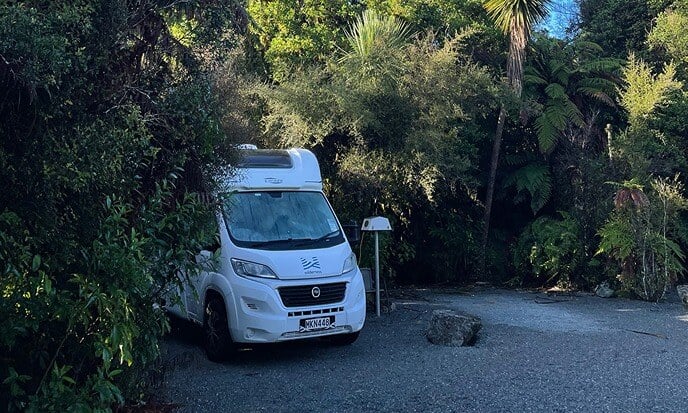
The motorhome house battery
Your motorhome will have a house battery — otherwise known as a leisure battery. It stores a 12V reserve of power — as a single deep-cycle battery or sometimes two connected in tandem.
When you’re parked up without access to mains, this is the power that will supply your:
-
Lighting
-
Device charging at any USB ports
-
Entertainment systems.
In some smaller motorhomes or campervans, the 12V house battery power storage is often used to run a fridge that can’t be switched over to gas while freedom camping.
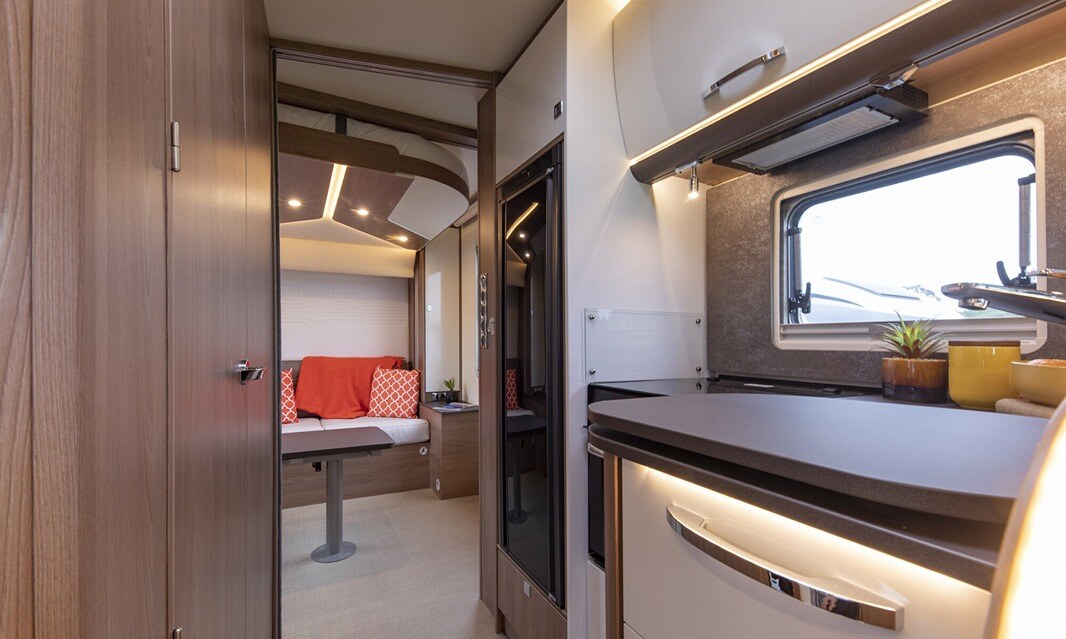
Where does your house battery’s power come from?
Your motorhome or campervan’s house battery is replenished with electrons supplied by the two onboard chargers. These chargers are usually located near the fusebox and main electrical on-off master switch of your recreational vehicle.
The storage battery that the chargers serve is often located directly below the front passenger seat of your motorhome. It’s almost never found under the bonnet in the engine bay — although there are some exceptions.
Volkswagen’s Grand California campervan models have the house battery in the engine bay. However, the battery that starts the engine and powers mechanical ancillaries is mounted beneath the passenger seat.
In contrast, Bürstner's Lyseo TD Series motorhomes store the house battery in a different location. This is often beneath a false floor under the rear passenger seat behind the dining table. However, the house battery isn't always stored in the same place, so check your user manual to be sure.
|
Are you considering adding an extra battery to increase your 12V power storage capacity?
Paul Owen — Award-winning motoring journalist |
The reasons for two motorhome battery chargers
When travelling around in your motorhome, the house battery will have two ways of charging.
Direct current to direct current
One is the direct current (DC) to DC charger, which takes direct current from the engine alternator when driving and uses it to power up your house battery.
This charger will also trickle-charge your battery from any solar panel fitted to the roof of your motorhome — with the process monitored by a solar power controller.
Alternating current to direct current
Alternating current (AC) to DC is the other charger that converts any alternating current supply — like from a campground power site or separate generator — to 12V of direct current and stores it in your house battery.
|
Plugging into a 240V power source equipped with a standard 10 amp (A) house plug?
Paul Owen |
Take a look at our other blogs on safety, such as using LPG safely and seatbelt safety.
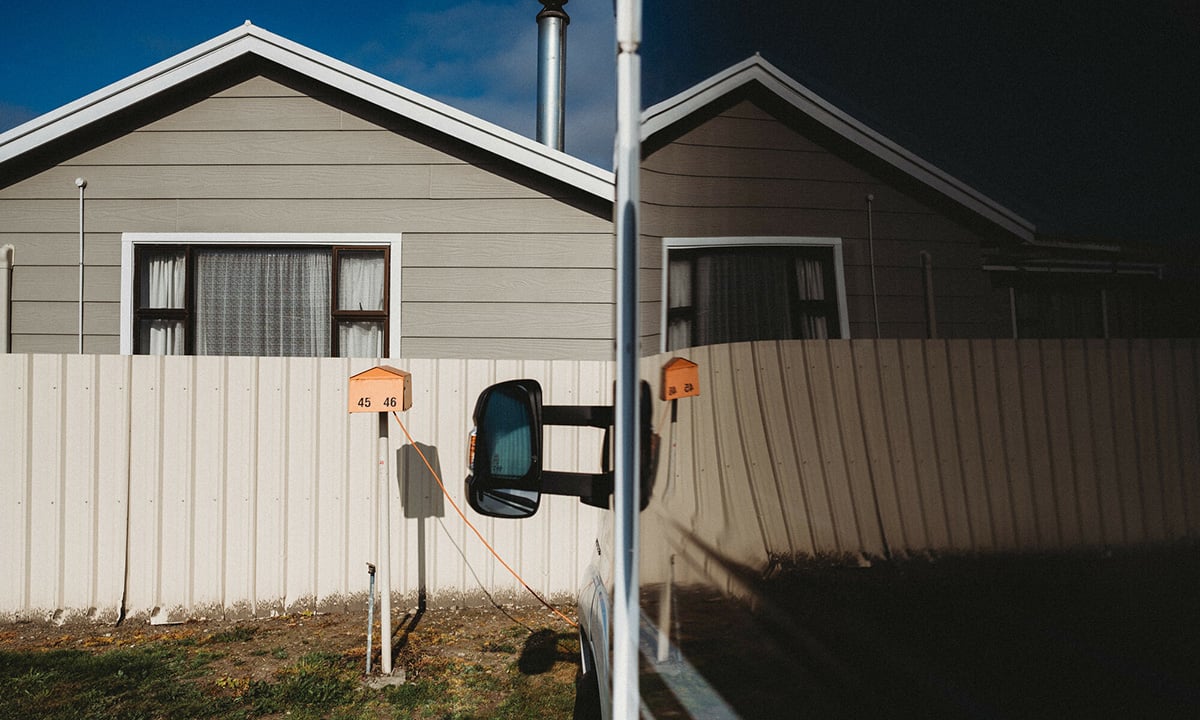
Guidelines for recharging your house battery
It’s best to think of storing power with a similar mindset to water storage. Your water tank acts as a reservoir — and so should your battery.
The major difference is that you must replenish the power in your battery when it’s:
-
Still half full — in the case of lead acid and AGM batteries
-
Around one-fifth full — for lithium-ion batteries.
Discharging your battery lower than these levels can result in irreparable damage to the battery. Be sure to regularly check the levels on your campervan’s battery monitor to help maintain the health of your house battery.
Power storage levels will be more resilient if solar panels are fitted because you'll have an additional energy source — the sun. However, cloud cover drastically reduces their performance.
Ritual battery monitoring is a good habit, even when you've installed a solar panel backup.
|
It’s useful to know exactly how much power your house battery can store and what each appliance uses — to understand how much power you can expect to use while freedom camping.
Paul Owen |
The power cable and cable adapter
Ensuring a safe and reliable connection to mains power is crucial. This starts with understanding the specialised equipment that you’ll need.
The power cable
Forget bringing along your standard extension cord. Motorhomes require power cables designed specifically for higher electrical loads and outdoor use. The key features of a mains power cable for motorhomes are:
- The three-pin plug — flat angled pins with the long, thick top one going to earth
- Robust construction — durable connectors and thick insulation are essential hallmarks of power cables so they can withstand the rigours of outdoor use.
One end of the power cable plugs into your motorhome. It may have a flap over the plug to protect it from the elements. This flap has to be opened, and the plug placed carefully in the slot above the power socket on the side of the motorhome.
The other end plugs into the power source.
The cable adapter
A cable adapter may be necessary for older campsites or unique electrical setups. Cable adapters let you safely connect your power cable to various socket types, like someone’s home or a public charging station — giving you greater travel flexibility.

How to carefully charge your battery from a 240V source
Common 240V power sources for recharging 12V house batteries are:
- A 15A connection socket — found at the top of a post on a power site at a campground or holiday resort
-
The national grid mains supply — located in a nearby building
-
A stand-alone generator — that chugs away quietly next to your parked motorhome.
Amps measure the flow of current from a plug to your motorhome. The voltage of that current will be a constant 240 volts. This voltage is high enough to be fatal should a fault occur — so we’ve outlined the safest step-by-step methods for recharging from each power source.
Connecting to power at a campsite
Pulling into a camping ground every few nights will allow you to take advantage of its facilities. Here’s the safest way to plug into the 15A power supply at campsites.
-
First, inspect your site’s power supply — the outlet socket should be clean, and the circuit breaker should be in an equivalent serviceable state.
If it’s covered in cobwebs and mounted on a corroded plate, ask if you can use another site with a better-maintained power supply.
-
Deploy your power cable to reach both the supply outlet and your motorhome — without any loops coming into contact with each other.
-
Plug in the motorhome end first and repeat the process at your site’s supply outlet.
-
Check the battery monitor inside your motorhome to ensure the house battery is being charged.
If it’s not, it’s likely that the circuit breaker near the site’s power supply socket was already triggered when you connected the power cable. Disarming the circuit breaker should enable power to flow from the site to your house battery.
|
Check the weather forecast when staying at powered sites. If you know the wind direction, you may be able to park your motorhome in a position where your power input socket is sheltered from any expected rain — because water and electricity don't mix.
If water gets into the socket, it can create a short circuit, potentially leading to an electric shock and damage to the equipment.
Paul Owen |

National grid mains supply
You can access the mains power supply via a 10A outlet socket from your nearest building. Here’s how to utilise this power.
- Identify the ideal position to park your motorhome in relation to the building while taking into account:
-
Shelter from the weather
-
The length of the power cable
-
Whether your cable adapter is weatherproof or must remain indoors.
Ideally, the space between your motorhome and the building is rarely frequented by children or pets.
-
Position your motorhome so its power cable input socket is on the sheltered side of any prevailing wind.
-
Deploy the power lead so that it’s completely uncoiled with no contact between loops of the cable.
-
Plug your cable into the input socket on the side of your motorhome.
-
Carefully place the other end of your cable inside the building — through either a partially open window or a garage door.
-
Attach the cable adapter to the other end of the cable.
Position the cable on some form of support near the power supply socket — so that it won’t hang down and dislodge the connection when connected to the mains.
-
Plug the cable adapter into the power supply output socket and switch the power on.
-
Check the battery monitor inside your motorhome to ensure your house battery is being charged. If it isn’t:
-
-
Turn off the power supply
-
Flip over the tab on the cable adapter’s circuit breaker — as it often gets flipped while in transit
-
Switch the power supply socket back on
-
Recheck your battery monitor — to confirm the house battery is now being charged
-
If there's still no power flowing to your motorhome, check the fuse box inside the building — to see if the circuit breaker for that socket has been triggered.
-
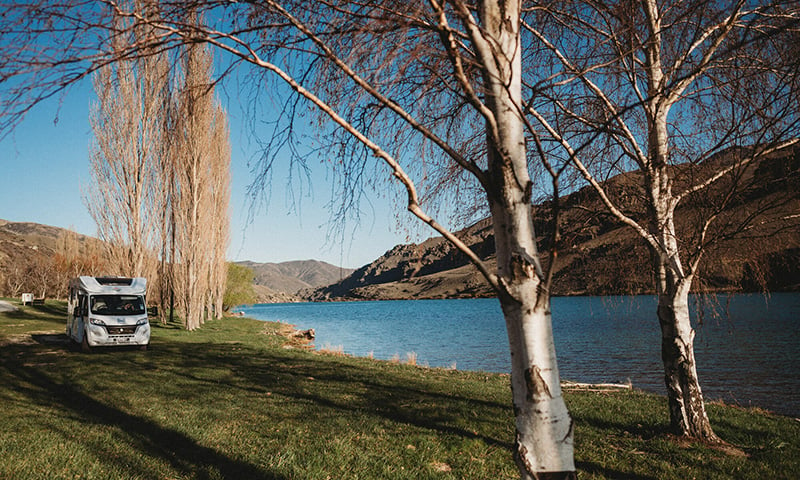
Stand-alone generator
Sometimes a building with 240V power simply isn’t available. A portable generator allows you to go to plan B when your house battery needs recharging.
Preferably, choose a generator that:
-
Doesn't run on diesel — as diesel generators are noisier and more polluting
-
Has efficient noise and emission suppression
-
Already comes with the same type of 15A output socket used on power sites in most camping grounds.
Hooking up to a mains power supply is the quickest way to recharge your house battery, but if a generator is your only resort, here’s how to use it.
-
Place your generator at least a metre away, and:
-
Downwind from any open motorhome doors or windows
-
On a flat-level site
-
Sheltered from the elements.
-
-
Start the generator and allow the motor to warm up before plugging your motorhome’s power cable into the 15A outlet socket.
If your generator only has a 10A outlet socket, you’ll need a cable adapter — the same as what's required when charging from a house or building.
-
When your generator motor is at operating temperature:
-
-
Plug the power cable into the input socket of your motorhome
-
Attach the other end to the outlet socket of your generator — using the cable adapter if the generator has a 10A outlet socket.
-
4. Turn off the eco mode on your generator, as you’ll want it to operate at full capacity.
If your house battery was fairly depleted before connecting to a generator, just be aware that it can take eight to ten hours to fully recharge.
|
If you plan to camp off-grid for an extended period, fire up your generator for a few hours each day — to keep your house battery topped up and reduce the chances of running it down. Using it sparingly in this manner will also be appreciated by other campers at the site.
Paul Owen |
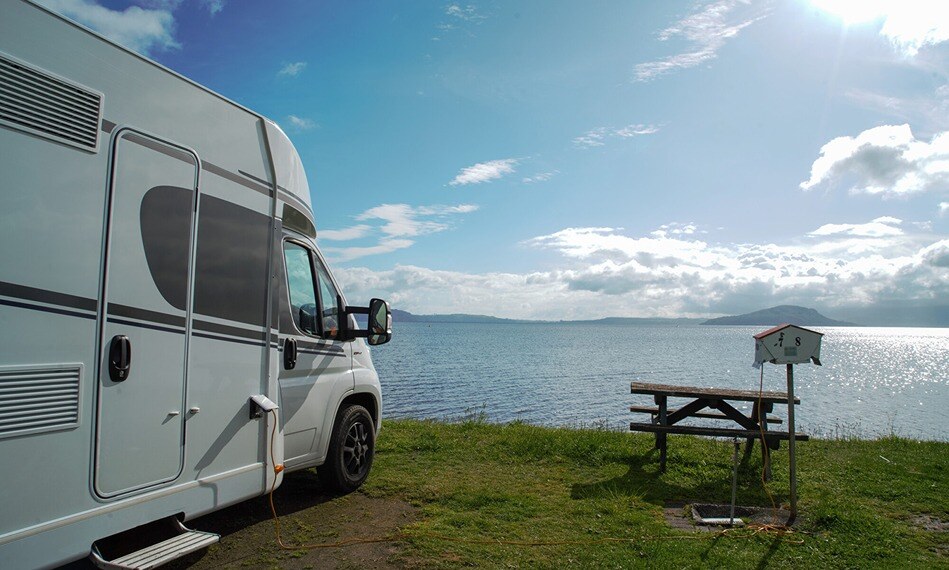
Using the DC to DC charger
Firing up your motorhome's diesel engine will immediately activate your engine's ancillary alternator. This will feed 14V of power to the DC to DC charger — with the direct current flowing at 140A.
Your house battery will steadily recharge with the engine at idle speed, but charging at low revs can accelerate the wear of the diesel engine’s valve train and cylinder bores.
Some RVs, like the VW Grand California, have fast-idle buttons to allow safe recharging of the house battery without the need to move.
The new HYMER ML-T 580 4x4 also has some extra features for charging house batteries. Known as the HYMER Smart Battery System, it includes an additional 18A charger and battery computer.
A far better way to recharge your house battery using the engine alternator is to simply take your motorhome for a drive.
Remember that discharging an AGM battery below 50 percent of its capacity will cause irreparable damage. As the house battery's voltage drops, charging effectiveness will gradually decline — particularly if you rely on driving to top up the charge.
For more information on motorhome power, check out our guide to 12V batteries.



